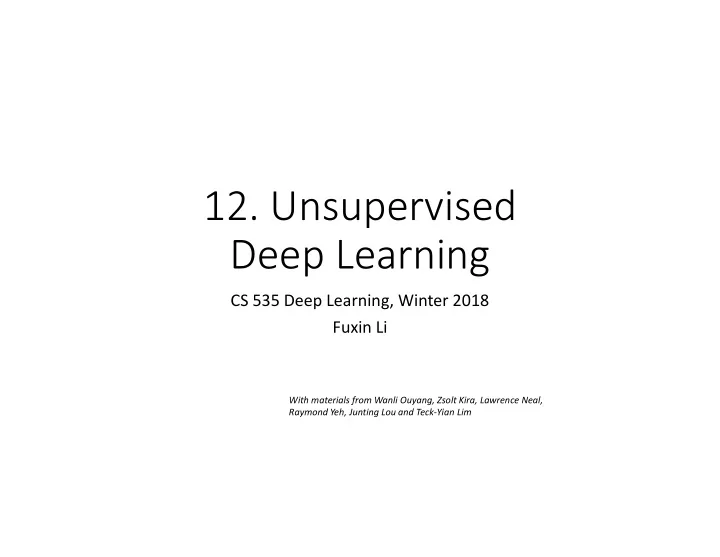

Sliced Wasserstein Distance • For each image, build a Laplacian pyramid • Sample many patches from these pyramids • Normalize them by their mean/variance • Yields R/G/B histograms at each scale • Measures difference in distributions • Used as SWD(real_images, generated_images) • Lower score (more similarity) is better • Measures realism
Experiments
Nearest Neighbors Comparison with training set images
Results
Boltzmann Machine (Fully-connected MRF/CRF) • Undirected graphical model • Binary values on each variable • • • Consider only binary interactions ) E ( x; w x x x ij i j i i i j i f ( x ; ) m m m E ( x ; ) e f ( x ; ) P ( x ; ) m , E ( x ; ) f ( x ; ) e Z ( ) m m m x x m w : { , } ij i Boltzmann machine: � � � � �
Restricted Boltzmann Machines • We restrict the connectivity to make j hidden inference and learning easier. • Only one layer of hidden units. visible i • No connections between hidden units. 1 p ( h ) • In an RBM it only takes one step to 1 ( ) j reach thermal equilibrium when the b v w visible units are clamped. j i ij 1 e i vis • So we can quickly get the exact value of : v i h j v
What you gain
Example: ShapeBM (Eslami et al. 2012) • Generating shapes • 2-layer RBM with local connections • Learning from many horses
Training: Contrastive divergence Start with a training vector on the j j visible units. v i h j 0 v i h j 1 Update all the hidden units in parallel. i i Update the all the visible units in t = 0 t = 1 parallel to get a “ reconstruction ” . reconstruction data Update the hidden units again . D w ij e ( v i h j 0 v i h j 1 ) This is not following the gradient of the log likelihood. But it works well.
28x28 Layerwise Pretraining T W 1 (Hinton & Salakhutdinov, 2006) 1000 neurons • They always looked like a really T W 2 nice way to do non-linear 500 neurons T dimensionality reduction: W 3 • But it is very difficult to 250 neurons T optimize deep autoencoders W 4 linear using backpropagation. 30 units • We now have a much better W 4 way to optimize them: 250 neurons • First train a stack of 4 RBM’s W 3 • Then “unroll” them. 500 neurons • Then fine-tune with backprop. W 2 1000 neurons W 1 28x28 100
Recommend
More recommend